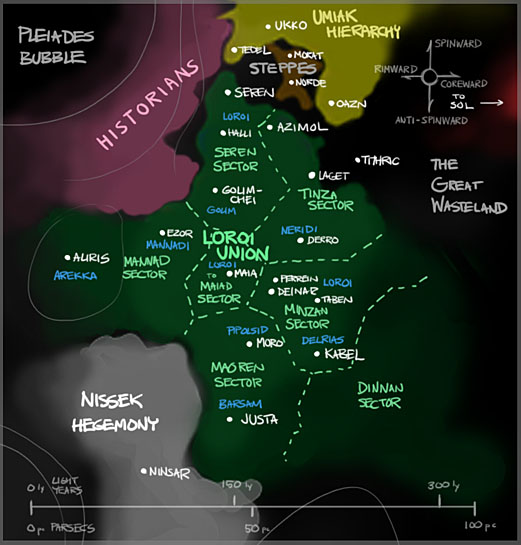Zakharra wrote: True, but for someone at 160-200 years old? Unless medical technology has gotten a lot better at reducing the effects of aging (brittle/weak bones, worn out joints, lower muscle tone and organs and such), I cannot really see anyone that age in anything other than a medical center because of their extreme age.
Lifespans have dramatically lengthened in the last 50 years just through better general health care, without even tinkering with genetics. But genetic science means that increasingly we will have direct control over the fundamental processes of life, the ones that build and maintain our tissues. Most tissues are entirely capable of regenerating themselves, but are actually prevented from doing so; most (but not all) Earth organisms have "planned obsolescence" built into their genes, so that organisms don't compete with their own offspring. In theory, a body should be able to regenerate itself indefinitely, provided that you know which genetic buttons to push, you can afford the treatment, and the genetic information itself hasn't deteriorated. This is what I'm referring to with the "longevity" reference in the tech chart. But I don't expect such treatment to be easy or cheap, especially in the near term.
Grayhome wrote:If anything I would say Arioch's previous quote is woefully pessimistic, I've been examining lectures by economics and business masters that declare that unless a nation wishes to commit economic suicide they will implement any and all advances in medical technology concerning longevity as soon as is fiscally possible. We are already seeing the effects of developed (and many developing) nations providing free medical care to their citizens in the present economy. I anticipate that this practice will only increase in quality and quantity in the future, the nations who do not will simply fall behind and will not take a part in the future world stage.
The problem with declaring universal health coverage for everyone, no matter how unnaturally old they get, is how you pay for it. If the treatments to keep people alive become exponentially more expensive as they age (which is what's happening today), then that's not economically sustainable.
This stuff doesn't greatly figure into the story (it doesn't really matter, in story terms, what the health care rules on Earth are like or how old Captain Hamilton or Admiral Callan really are), and in a tale about aliens, it's not advantageous to focus on how much humanity itself has changed. But if you're thinking about the future state of Earth, I think it's hard to ignore the implications of what happens when people stop dying. If these treatments are effective and affordable, then taken to its logical conclusion, the inevitable result is a society like that described in Niven's "Known Space" novels, in which everyone is functionally immortal, and reproduction becomes a rare event to replace individuals lost to violence or unusual circumstances.
Of course, there are ways in which you can place limits on such as system. One problem is the integrity of the genetic material itself... even a regenerating organism is still susceptible to gene damage and cancer, and as an individual ages, the rate of cancer and other cell malfunctions may increase to the point where that individual is no longer viable -- even if you can treat the cancer, it could reach a point where you just can't keep up with it. This may place an upper limit on how long an individual can live, even with perfect ability to manipulate genes. This is what I have in mind with the upper limit on Loroi lifespans of ~400 years; Loroi don't have a built-in limited lifespan the way we do, but after a long enough time, the cumulative damage to the genetic system becomes critical and the body can no longer regenerate itself. Loroi can be kept alive past this age, but it requires extraordinary measures.
Another possible limitation is societal: such practices may be considered immoral or illegal. The Umiak, for example, do not hesitate to manipulate their own genes or reproduce artificially, but seeking immortality doesn't make much sense in a society in which the value of individual lives is placed below the good of the society, and in which an individual is expected to willingly lay down its own life more or less on demand.
Grayhome wrote:Cause that could be a thing. I mean it's been done before in Sci-Fi but it's still a nice plot hook, if that is the case I expect to see prisoners being used as organ banks and minorities being sentenced disproportionately more than say, white Christian males.
I think that once you have the ability to grow or construct tissues and organs based on your own genes, the need to use other people's parts (which your immune system will try to reject) will all but disappear.


